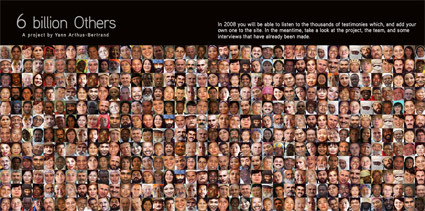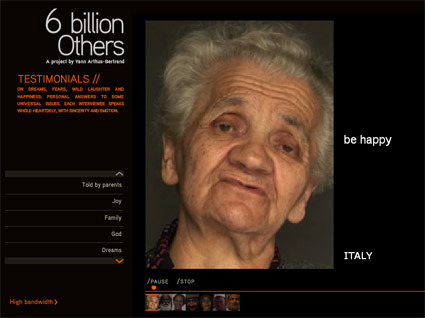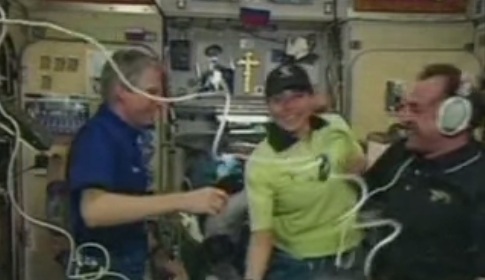
The name Yann-Arthus Bertrand may strike a familiar chord – he’s perhaps most well known for his “Earth from above” series, where he’d take stunning images of the Earth from a helicopter. It turns out he’s not just a one-dimensional aerial photographer.
I just discovered one of his other ventures, 7 Billion others , which is an equally inspiring set of interviews: about 6000 people from 65 different countries were interviewed on topics common to all humanity – god, happiness, parents, experiences, family, etc, bringing a sense of commonality amidst diversity. As Yann-Arthus describes the motivation for this project:
The idea came to me while we were taking the shots for “Earth from Above”, in Mali, one day when the helicopter was out of action. The pilot had gone and I was waiting for him in a little village where I started to have a discussion with someone. I stayed there the whole day. In the evening, by the fireside, that man I’d been talking to told me his entire life, his desires, his wishes, his ambitions – they could be summed up in four words – “to feed my family”. In spite of the poverty, the drought, I still thought I understood the whole situation. But in fact I didn’t have a clue until that man put it to me, just like that, looking me straight in the eye, not complaining, not asking me for anything. That meeting changed me, it changed the whole way I see the world.
From shooting hundreds of meters above ground, he’s zoomed right to the human, face-to-face videography – the portraitures are close-up and tightly framed, capturing every bit of emotion that makes it much more touching and intimate.
And as these fellow Earth-inhabitants look straight on, honestly and earnestly sharing their personal feelings, dreams, aspirations and worries, we can’t help but be inspired, to relook inside ourselves, and into our own lives.




